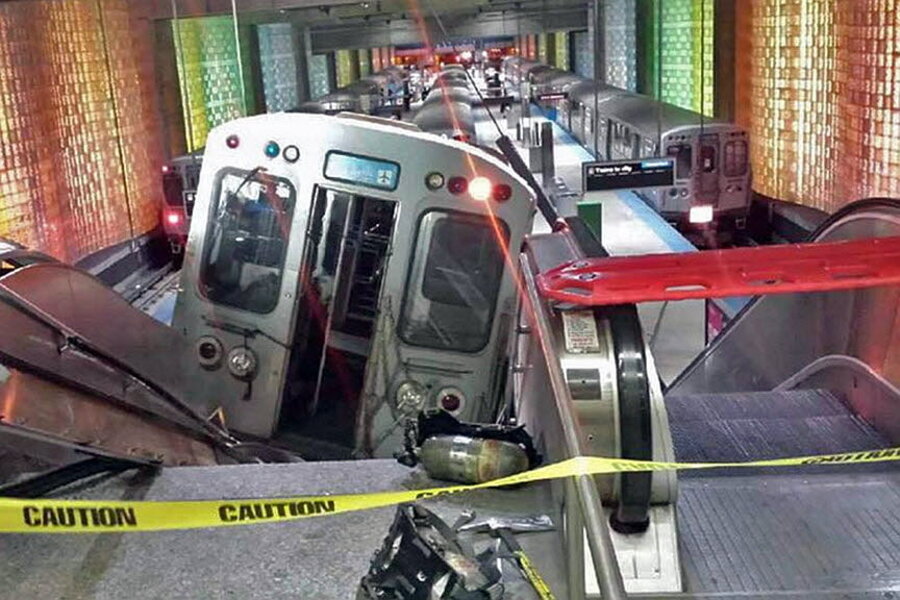Chicago transit rail crash: a job predisposed to operator fatigue?
Loading...
| Chicago
Operator error, a factor in at least two-thirds of freight and passenger train accidents, may be in play in the case of the Chicago transit rail train that jumped a barrier at O’Hare International Airport early Monday, crashing eight cars and sending 32 people to the hospital.
The National Transportation Safety Board (NTSB) is investigating the accident and was set to interview the train's engineer Tuesday afternoon. Robert Kelly, president of Amalgamated Transit Union Local 308, told the Chicago Tribune late Monday that, “I can confirm that [the engineer] was extremely tired.… Indications are she might have dozed off.”
NTSB investigator Ted Turpin said Tuesday that “we always take into consideration the fatigue factor. That's one of the areas we investigate.” Speed did not play a factor, Mr. Turpin said. A preliminary review found that the train was traveling at 25 miles per hour – the correct speed – as it entered the station where the accident occurred. No one was killed.
If operator fatigue proves to be behind the accident, there is ample precedent: Human error accounts for about 2 in 3 train accidents, reports the Federal Railroad Administration (FRA), a division of the US Department of Transportation. When rail-related accidents result in fatalities, human error is responsible 95 percent of the time.
The operator of the Chicago Transit Authority (CTA) train logged into work at 8:30 p.m. Sunday, said Timothy DePaepe, an NTSB rail investigator. The investigation will examine her activities for the previous 24 hours.
Railroad Workers United, which represents 13 labor groups in the US and Canada, last year released a survey that showed 56 percent of railroad employees reported that fatigue makes it difficult to maintain safety rules and regulations while on the job.
The findings correspond to FRA data, also released last year, showing that the likelihood of accidents jumps from 11 percent to 65 percent when rail workers are fatigued, and that railroad workers are less likely than most Americans to get at least seven hours of sleep on workdays, putting them at risk of making mistakes that adversely affect public safety.
Even so, train accidents and derailments have diminished 47 percent since 2004, reports the FRA, noting that 2012 was the safest year on record. The improvements relate directly to the Rail Safety Improvement Act of 2008, which strengthened safety regulations for passenger and freight rail, the agency says.
In December, a Metro-North commuter rail train traveling at three times the speed limit derailed and crashed in New York City, killing four passengers and injuring 67 people. An investigation showed that the train’s engineer was asleep at the controls.








